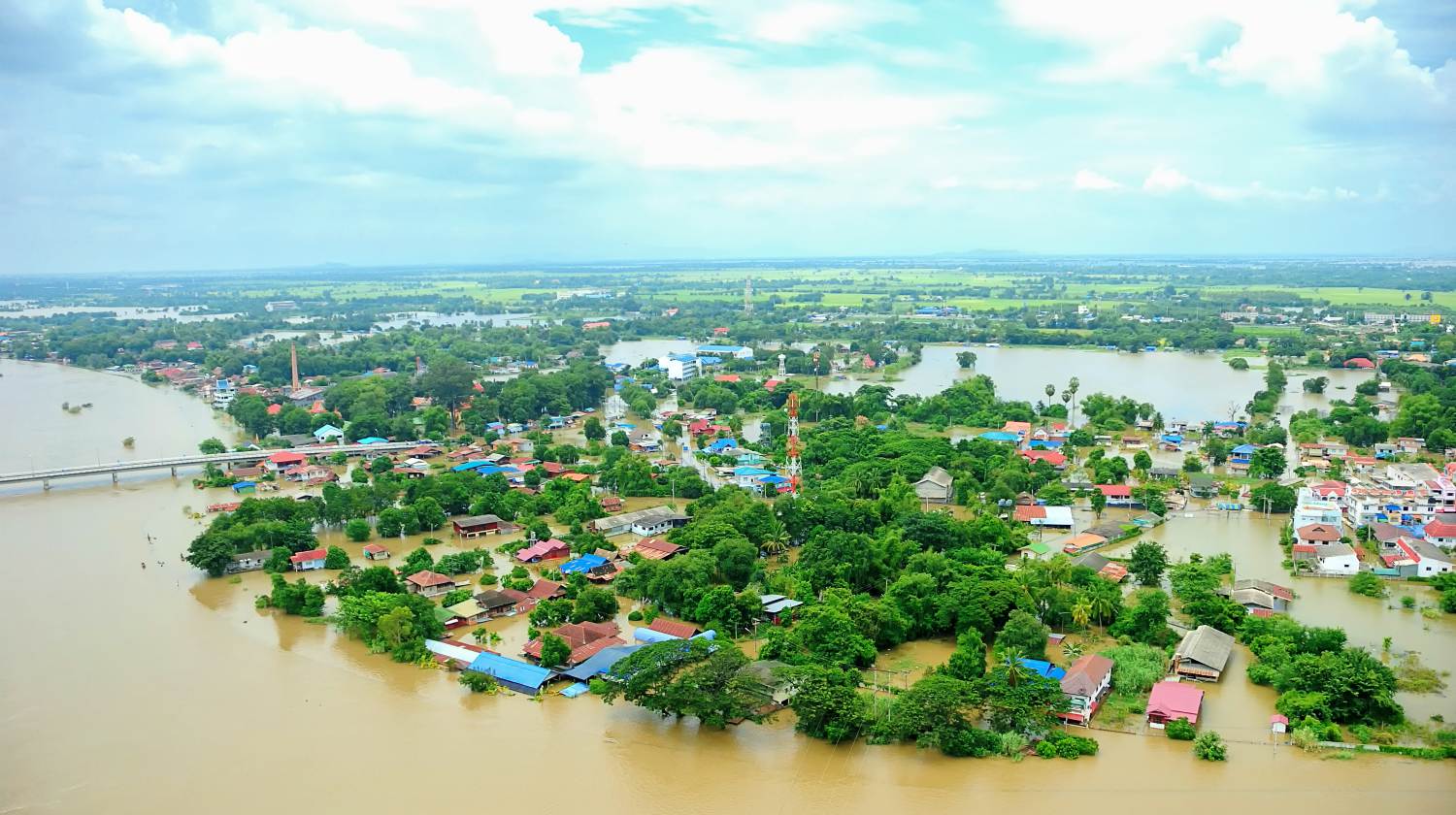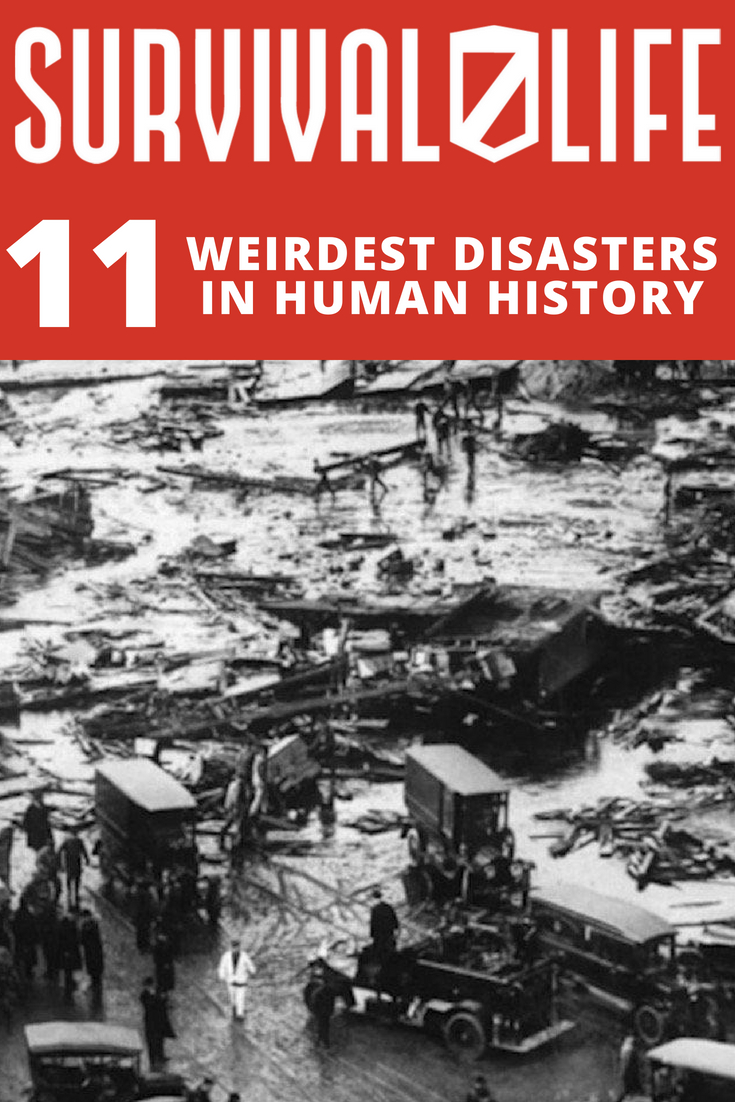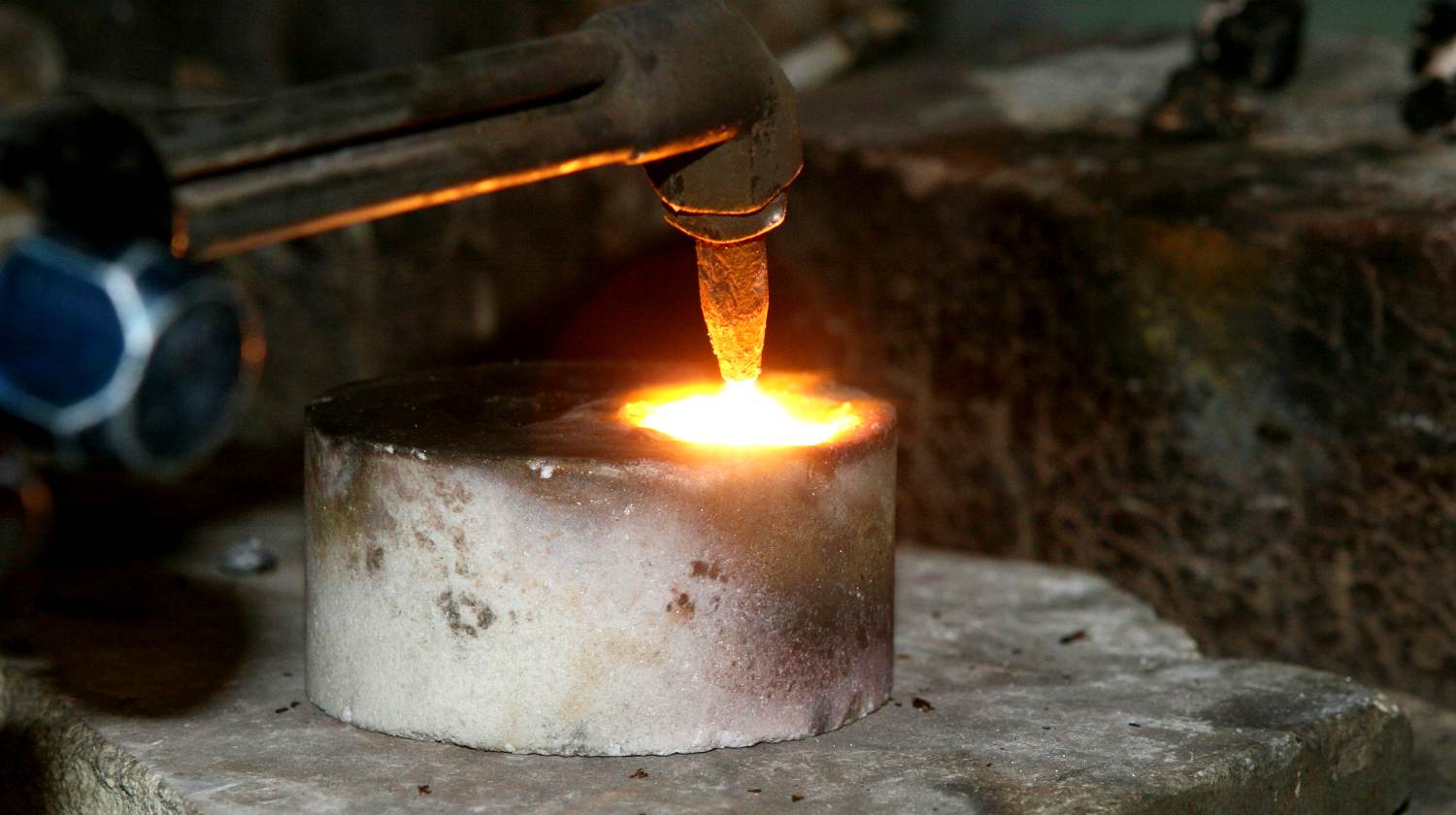Featured Articles
The 11 Weirdest Disasters In Human History

These weirdest disasters in human history prove the unthinkable does occur and it pays to always prepare!
RELATED: 20 Global Catastrophes To Prepare For NOW
Know the Weirdest Disasters in Human History
1. Centralia Mine Fire
|
Location: Centralia, PA
Date: May 1962 – Present
Disaster type: Coal seam fire
Casualties: 111 dead
On May 27, 1962, a fire broke out near a coal mine in Centralia, Pennsylvania. While the origins of the fire are unclear, people say it was lit on purpose to clean up a landfill.
Citizens of Centralia thought the fire put out, but the fire crept and crawled along coal-rich deposits.
It then made its way into the mine itself. The fire became impossible to extinguish.
It made its way under homes and businesses, as a result. It also released toxic gases like carbon monoxide.
Centralia became a municipalis non Grata. Its citizens were then forced to move out and the fire continues to burn today.
What Is Municipalis non Grata? Municipalis is Latin for a town, while non Grata means unwelcome in English, thus an area or place where entry or stay is not welcome.
2. The Empire State Building Crash
Empire State Building after having a B-25 crash into the side. July 28, 1945. pic.twitter.com/fO4uOz0eXR
— Historical Images (@Historicalmages) February 19, 2016
Location: New York City, NY
Date: July 28, 1945
Disaster type: Plane crash
Casualties: 14 deaths (11 in building and 3 crew)
On July 28, 1945, a B-25 Mitchell Bomber carried two pilots and one passenger. It was going from New Bedford, Massachusetts to LaGuardia airport in New York City.
It then got lost in the dense morning fog. Air traffic control instructed the plane to land in nearby Newark airport instead.
The plane flew directly over the island of Manhattan. Flying low and slow and seeking visibility, it narrowly missed the Chrysler building in midtown Manhattan.
Yet in doing so, the plane flew directly into the north side of the Empire State Building, where the jet fuel exploded on impact. The crash and resulting fire killed 11 people.
3. The Great Boston Molasses Flood
The Great Molasses Flood occurs when a 2.3 million tank of molasses collapses and floods the streets of Boston, resulting in 21 deaths and 150 injuries: pic.twitter.com/JiwQW55jSD
— 100 Years Ago Today (@CenturyAgoToday) January 15, 2019
Location: Boston, MA
Date: January 15, 1919
Disaster type: Molasses storage tank explosion
Casualties: 21 dead, 150 injured
On January 15, 1919, a large molasses storage tank burst at the Purity Distilling Company facility in Boston, Massachusetts. As a result, around 2,300,000 gallons of molasses flooded the streets at speeds up to 35 miles per hour.
In the end, 21 lost their lives and 150 got injured. According to local folklore, the streets still smelled of molasses on hot summer days for years afterward.
4. The Texas City Chain Reaction Explosions
|
Location: Port of Texas City, TX
Date: April 16, 1947
Disaster type: Industrial explosion
Casualties: 567 dead, 1,000 injured
On the morning of April 16, 1947, a French-owned cargo ship called the SS Grandcamp, caught fire and exploded. It was carrying several tons of explosive petroleum nitrate.
In the immediate path of the explosion were the dock area, the Monsanto Chemical Company, and other small companies and buildings. The grain warehouses, oil, and gas chemical storage tank were also along the path.
Debris flew throughout the city, igniting more homes and businesses and causing other small explosions. The blast also caused a 15-foot tidal wave, which swept the dock area.
Another nearby ship, the SS High Flyer, caught fire from the explosion. It was towed 100 feet from the dock before it exploded 16 hours later.
5. The Chandka Forest Elephant Stampede
|
Location: Chandka Forest, India
Date: Spring of 1972
Disaster type: Elephant stampede
Casualties: 24 dead
In 1972, a devastating heat wave and drought hit India. It caused widespread hunger and heat exhaustion all over the subcontinent.
The greatest disaster, though, came from a herd of elephants. Enraged by their hunger, they were desperate to get out of their present condition.
They then stampeded through the villages in the Chandka Forest. The herd of large animals destroyed many buildings and trampled 24 people to death.
RELATED: 10 Natural Disasters Across The Globe You Need To Know About
6. The Tunguska Event
|
Location: Tunguska River, Siberia (present-day Krasnoyarsk Krai, Russia)
Date: June 30, 1908
Disaster type: Explosion in forest
Casualties: Large-scale loss of forest (no human casualties)
On the morning of June 30, 1908, a fireball streaked across the sky in a remote area of Siberia. Moments later, a large explosion occurred above the Tunguska River.
It released enough energy to kill reindeer and flatten trees for miles around. The theory is an incoming asteroid caused the explosion.
It exploded in the atmosphere and never actually struck the earth. Yet, no meteorite fragments or crater were ever found.
7. The Pittsburgh Gasometer Explosion
|
Location: Pittsburgh, PA
Date: November 14, 1927
Disaster type: Gasometer explosion
Casualties: 28 dead, hundreds injured
On November 14, 1927, the largest cylindrical gasometer in the world, located in Pittsburgh, Pennsylvania, developed a leak.
Repairmen sent to the scene used an open-flame blowtorch to find the leak. Unsurprisingly, the flame and natural gas proved to be a deadly combination.
The explosion caused a rain of fire and debris, which covered a radius of over a mile. It also killed 28 people and injured countless others.
8. The Gates of Hell
|
Location: Derweze, Turkmenistan
Date: Discovered in 1971
Disaster type: Natural gas crater
Casualties: No deaths or injuries
In 1971, Soviet engineers searching for an oil field site in Turkmenistan found a natural gas field instead. The engineers, concerned about the release of poisonous gas into nearby towns, decided to burn off the gas.
It was a process they expected to take just a few weeks. To their surprise, the gas has burned for over four decades, with no end in sight.
9. The Exploding Lake
There’s an exploding lake in Cameroon that killed nearly 2,000 people https://t.co/Kz8EHYvTv9 pic.twitter.com/JN2y0bkTbf
— EMN (@EarthMysteryNew) March 1, 2019
Location: Lake Nyos, Cameroon
Date: August 21, 1989
Disaster type: Limnic eruption (lake overturn)
Casualties: 1,700 deaths
In August 1989, Lake Nyos — a volcanic crater lake in Cameroon — released a cloud of carbon dioxide gas that covered the nearby valley and settlements. Over the next two days, the cloud continued to spread over 15.5 miles, killing over 1700 people.
Those who were not killed were unconscious for several days. They woke up to find their family, friends, and neighbors had passed away from inhaling the poisonous gas.
The incident was so bizarre making it one of the worst natural disasters and definitely top spot on the list of weird natural disasters.
10. Lake Peigneur
|
Location: Iberia Parish, LA
Date: November 20, 1980
Disaster type: Accidental drilling
Casualties: No deaths or injuries
In 1980, a Texaco oil rig accidentally drilled into the Diamond Crystal Salt Company salt mine under Lake Peigneur in Iberia Parish, Louisiana.
The mistake resulted in a whirlpool that sucked in the drilling platform. It also sucked eleven barges, countless trees and 65 acres of the surrounding terrain.
Miraculously, no one died, and even the workers in the mine were able to escape to safety thanks to a well-executed evacuation plan.
11. Sugar Explosion
|
Location: Port Wentworth, GA
Date: February 7, 2008
Disaster type: Sugar dust explosion
Casualties: 14 deaths, 47 injuries
In February 2008, an explosion at the Imperial Sugar refinery in Port Wentworth, Georgia killed 14 and injured 40.
While the direct cause of the explosion is not known, outdated storage silos under the building may have caused it.
Check out this list of the top 11 weirdest disasters the world has ever seen:
Human history has seen its fair share of bizarre and often unexplained natural disasters. Most natural disasters have a logical explanation–but what about those that don’t?
We may never know the full facts behind these weirdest disasters but we can all learn from each, especially survival and preparedness.
What do you think of these weirdest disasters? Do you know of any other? Let us know about it including your thoughts about this list in the comments section below!
Up Next:
- 24 Real World Self Defense Lessons: Ways To Catch Your Breath In Disaster
- Hurricane Survival Tips: How To Survive Natural Disasters
- Disaster Preparedness: Prepping With Kids
For awesome survival gears that you can’t make at home, check out the Survival Life Store!
Follow us on Facebook, Instagram, Twitter, Pinterest, and Tumblr!
*Disclaimer: The contents of this article are for informational purposes only. Please read our full disclaimer.*

Editor’s Note: This post was originally published on September 20, 2016, and has been updated for quality and relevancy.
-

 Do It Yourself7 months ago
Do It Yourself7 months agoParacord Projects | 36 Cool Paracord Ideas For Your Paracord Survival Projects
-

 Do It Yourself9 months ago
Do It Yourself9 months agoHow To Make Paracord Survival Bracelets | DIY Survival Prepping
-

 Do It Yourself9 months ago
Do It Yourself9 months ago21 Home Remedies For Toothache Pain Relief
-

 Do It Yourself10 months ago
Do It Yourself10 months agoSurvival DIY: How To Melt Aluminum Cans For Casting
-

 Exports8 months ago
Exports8 months agoAre Switchblades Legal? Knife Laws By State



Pingback: Natural Disasters Across The Globe You Need To Know About
Anonymous
February 3, 2019 at 6:09 PM
😀 I LOVED this site! It helped me a lot with my research report, and got it done without breaking a sweat.
Anonymous
April 12, 2019 at 11:24 AM
girl with what a ice cream attack✔
Anonymous
April 12, 2019 at 11:26 AM
this helped alot i got confused on my project but suvival life helped me out.thank you.
Anonymous
April 12, 2019 at 11:22 AM
this is really amazing and sad at the same time and i want to study these things about our planet and i hope other people will too.❤❤
Pingback: The Tunguska Event [PODCAST] – The Self-Sufficient Life
Pingback: The Tunguska Event [PODCAST] – Sprent Brass
Pingback: The Tunguska Event [PODCAST] - Cooking in Quarantine
Pingback: The Tunguska Event [PODCAST] – Bulletproof Survivors